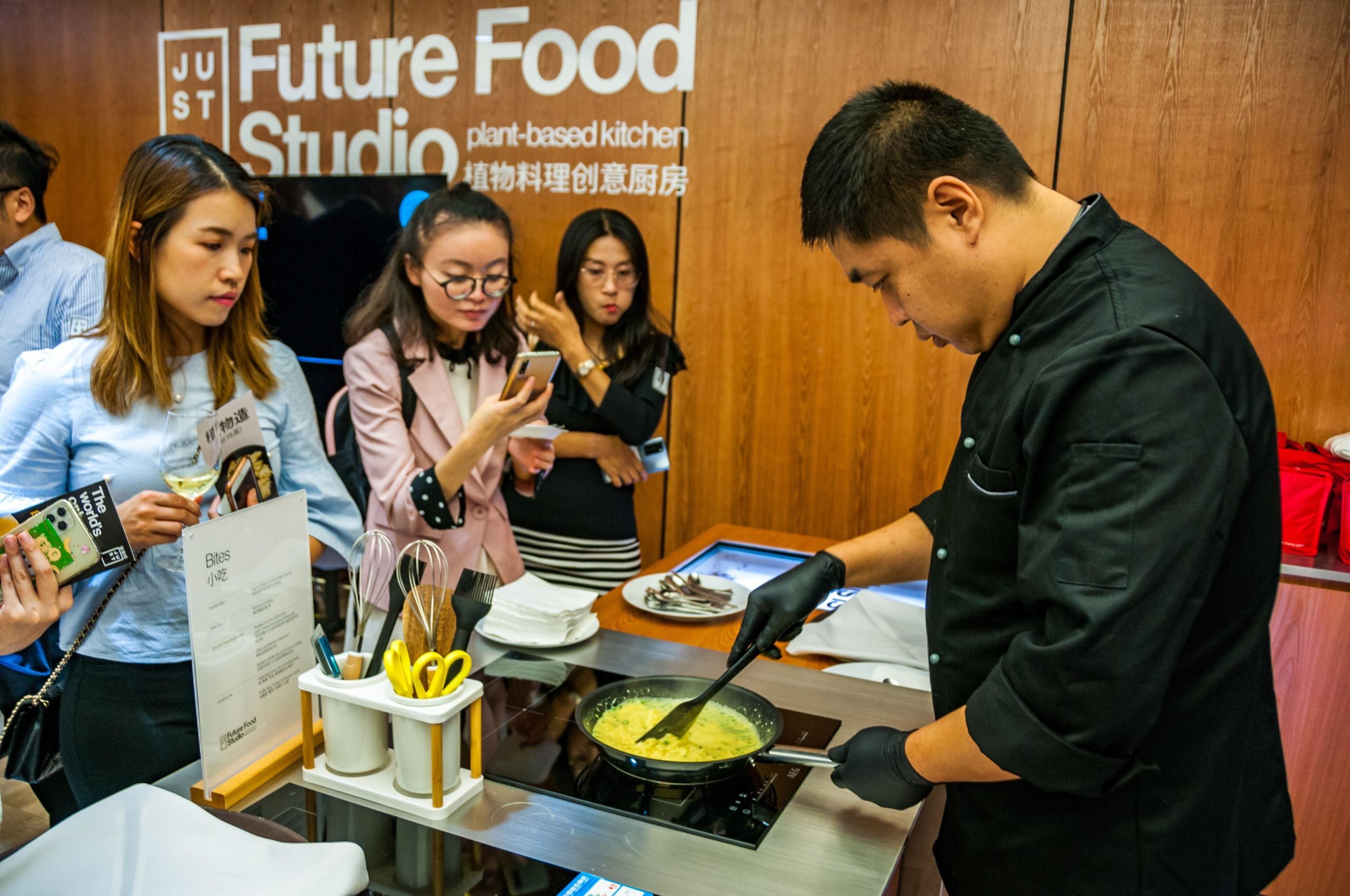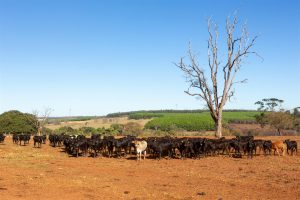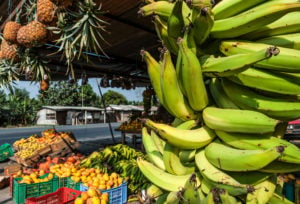The energy sector transition has so far dominated discussions regarding how China will achieve its goals to peak CO2 emissions before 2030 and become carbon neutral before 2060. However, reaching net zero will also require a sustainable transition within food production. After all, the global food system is responsible for around a third of all greenhouse gas emissions, and the agriculture sector is the leading driver of global biodiversity loss.
Investors will be closely monitoring China, which is host of the COP15 Biodiversity Summit, to see how shifts in food production will be achieved. One potential solution is a transition to sustainable protein, including plant-based, fermented and cultured protein, which as our recent report outlines, could support climate and biodiversity goals and public health, both within China and globally.
Agriculture’s massive footprint
Livestock farming, including feed production and processing, accounts for around 15% of annual global greenhouse gas emissions, including 32% of methane emissions. Animal agriculture also accounts for around a third of water use, and for over 70% of global antibiotics use. China is the world’s largest consumer of meat and the leading producer of pork, so changes it makes to how protein is produced and consumed will be important in limiting the harmful impact of the agriculture sector as a whole.
China has limited arable land to produce animal feed so it relies heavily on imported soy, accounting for approximately 63% of global soy imports, as of 2017. These imports have global implications for climate change and biodiversity loss, which in turn significantly impact financial markets. The World Economic Forum estimates that around US$44 trillion of economic value – over half of the world’s GDP – is dependent on nature and its services.
Investors in China and abroad are increasingly paying attention to these risks and demanding improved company disclosure to manage them in the long-term.
Lagging on ESG risks
China is in a unique position to build greater resilience in its food system and contribute to the low-carbon transition. Indeed, among the world’s 60 largest publicly listed protein producers, Chinese companies make up 40% of the total market capitalisation. However, of the 12 Chinese companies included in the Coller FAIRR Protein Producer Index, which assesses firms on environmental, social and governance (ESG) risks and opportunities, 10 ranked as “high risk” overall in 2020. This compares with 28 out of 48 companies outside China ranking as “high risk”, and no companies ranking as “best practice” globa
lly in 2020.
Furthermore, based on data from company publications, FAIRR’s research finds that most of the assessed Chinese companies do not disclose information on how they are tackling impacts on climate, biodiversity and public health along their supply chains. All these companies rank as “high risk” when it comes to deforestation and biodiversity. Evidently, there is still work to do to address ESG risks in China’s food system.
Although 58% of producers from China within the Protein Producer Index confirm they use soy in agricultural feed, none of them addresses how they manage soy-related deforestation risks. And despite indicating their intention to reduce emissions, 83% do not disclose whether they have set a target for Scope 3 emissions – the indirect emissions in a company’s supply chain beyond those relating to the purchase of electricity, heating and steam. This compares to 69% for companies outside China.
In addition to climate challenges, antibiotic resistance is another issue that poses long-term risks to livestock farming, humans and the economy. 92% of Chinese companies included in FAIRR’s Index do not disclose the quantity of antibiotics they use, and only three mention antibiotics policies or commitments to address the issue in their reporting. For companies outside China, 62.5% also fail to disclose the quantity of antibiotics used, but 77% of them have a policy in place.
Currently, disclosure requirements are in place for large state-owned enterprises and companies listed on the Hong Kong stock exchange, while further regulations are being rolled out. Chinese companies may actually be doing more than what they report on in publicly available documents, but failure to disclose this information prevents investors from being able to assess material risks and opportunities, provide advice, and question decisions and actions that could inform and direct companies on investor expectations. Improved disclosure will facilitate planning and decarbonisation strategies for both companies and policymakers. Detailed ESG reporting requirements and guidance from the Chinese government, combined with enforcement, will help agricultural producers across value chains identify what is material, set metrics and targets to help mitigate risks, and reduce the gap between investor needs and what is being reported.
A strategic opportunity for China
Global sales of alternative protein are expected to increase five-fold between 2020 and 2030 to $162 billion. A promising 25% of the twelve largest listed Chinese protein producers report that they are diversifying into alternative protein, mainly plant-based protein products like yoghurts, spreads and beverages. With private investment and government support, China’s market for alternative protein could grow substantially.
There are parallels to be drawn to the clean energy revolution. Just as government support and economies of scale led to a rapid drop in the cost of solar photovoltaics (PV), making China the largest producer of PV energy in the world, increasing government support and funding could bring down the cost of alternative protein products, which, alongside broader promotion, could help increase their adoption in Chinese cuisine.
China is well-positioned as a tech and innovation hub. Government backing for cell-based meat in China has risen, as demonstrated by a recent deal signed with Israel, and the interest shown by several food tech firms seeking to establish a market presence. CellX and Zhouzi Weilai, two early pioneers in the Chinese market, are currently working on creating cell-based meat products. In 2020, a member of the CPPCC (Chinese People’s Political Consultative Conference) suggested China should invest in cultured meat research and establish its own regulatory framework.
With many “mock meat” products tracing their roots to China, and Chinese consumers more likely to purchase plant-based or cultured alternatives than, for example, US consumers, there is potential for the sector to grow domestically. A shift to alternative protein production could help China tackle biodiversity loss and accelerate its journey to net zero, with co-benefits for other key global issues such as health outcomes and food security. As one of the world’s largest markets, China has a real opportunity to become a sustainable protein pioneer and tip the balance on sustainable food.
Positioning these products as an attractive choice that delivers on health and flavour while also addressing the environmental risks associated with animal protein production will be essential to encourage greater uptake from consumers.
To meet global climate goals, the global food and land use sector must kickstart a transition from emissions contributor to carbon sink. One study found that a global shift to plant-based diets by 2050 could lead to emission reductions equivalent to between 99% to 163% of the CO2 emissions budget consistent with a 1.5C pathway. The Chinese market could play a key role in making that shift happen.
Correction notice: The original version of this article stated that China had committed to peaking its carbon emissions by 2030. On 21 January 2025, this was corrected to before 2030.








